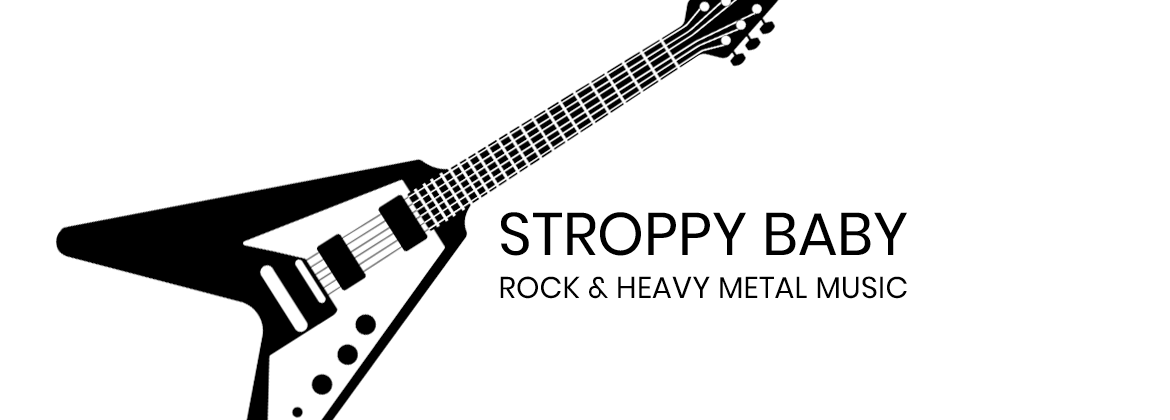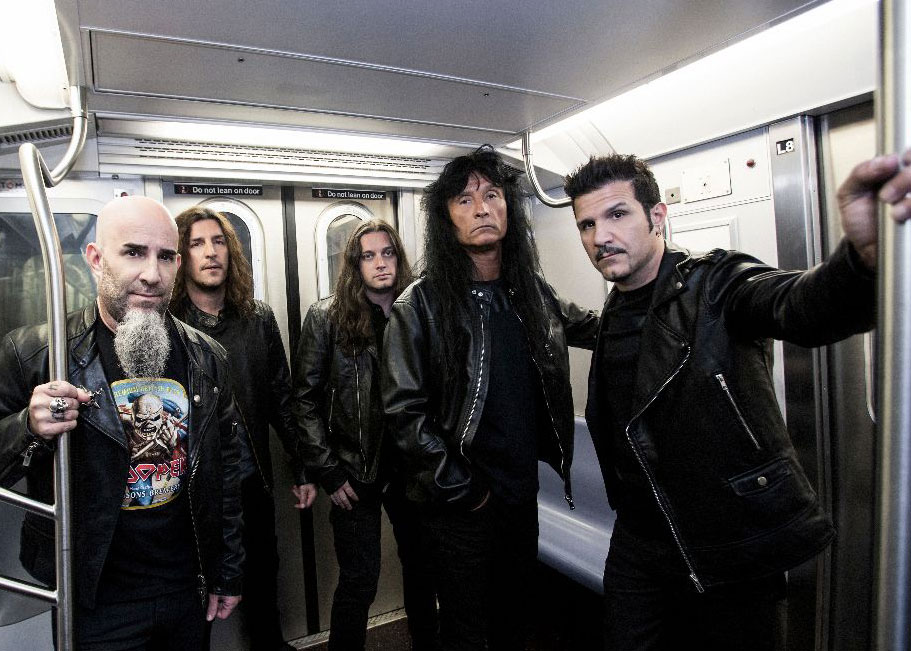American thrash band Anthrax, initially influenced by early Iron Maiden albums, have been a reliable thrash metal benchmark for many years since their inception. Having toured the world many times to surpass the success of bands that influenced them such as Raven and Venom, the band is widely respected as one of the Big Four thrash bands. They have survived several different vocalists to reconvene to a now seemingly stable lineup with original vocalist Joey Belladonna. Five years have passed since the hard won return to form album Worship Music to see this year’s eleventh studio album, For All Kings take them back to the forefront of the heavy music genre. Australian Guitar spoke to rhythm guitarist and original founding member Scott Ian as well as lead guitarist Jonathan Donais from Shadows Fall who became a full time Anthrax member in 2013.
ag: Jonathan’s solos on this album are impressive. You must be pretty happy to be working with him.
Scott Ian: Oh very happy, it has just been an amazing experience working with him. He is such a great player and writer. His solos on the record are just perfect. I don’t know how he does what he does.
Jonathan Donais: It is nice to finally have my stamp on Anthrax. I knew I was going to be under a microscope so I worked my ass off on the solos. I demoed them and sent them to Charlie [Benante – drums] to approve or discuss. We went in there, kicked them out and had a good time. I like memorable and melodic solos. Of course, I’m a guitar player so I try to put stuff in there for guitar players but only for a couple of bars or something to not lose the other people. I try to balance it out.
ag: Has your rhythm style changed at all over the years and does new blood in the band alter it?
SI: No, I can’t say. Having played with Rob[Caggiano – ex lead guitar ] and now Jon for a decent amount of time, they are both great rhythm players too which is something that we didn’t have before so if anything, my rhythm playing has gotten better as a result. Jon’s down-picking is faster than mine so it is a case of having to get better. I look at is a challenge because these guys are complete guitar players.
ag: Down picking at speed is a key feature of thrash metal. Does the speed of the music alone dictate a threshold before the use of alternate picking is needed?
SI: It is not a case of how fast, it is a case of what is right for the riff and what is going to make the riff be the riff that it is supposed to be. A riff could be medium tempo but it doesn’t mean it should be alternate picked because of the groove or the swing that the riff needs. Sometimes it needs to be down picked with staccato to be straight. It depends on each individual riff. My hand doesn’t bounce at all, it just digs in. My fingernails still break, my fingers get beaten up and my hands are like chopped meat sometimes.
JD: When I played with Shadows Fall we were always doing down stroke stuff so it wasn’t a change for me. You can only go so fast but it does sound chunkier. But I just did the leads, overdubs and little parts on the album, as Scott did the guitar rhythms. For my solos, I mix it up with hammer-ons and pull-offs. The two mixed together sound great and was first done by Paul Gilbert with spurts of legato and alternate picking combined. That is a big part of my style. There are some double tracking of solos, being a huge Randy Rhoads fan. I wrote the solos out so to me it was no different to doubling a rhythm track.
ag: There is a lot of good sonic variety on the album. Did co-production help bring that about?
SI: Working with Jay Ruston was great. He knows how to get the best performance out of me. The whole process of getting the tones was awesome by setting up many heads and cabinets to then listening to every speaker and checking each guitar to narrow it down to have the best tones. I have to spend time making sure that the sound through the speakers sounds like it does to my ears. It was just going through my Randall signature [Ultimate Nullifier EN 120] amplifier heads to see which ones sounded the best. We narrowed it down to two heads with one being beefier and the other being more top heavy in the frequencies; the combination made for the best sound. I stopped using Marshalls in 2000 because with the JCM800 I had to put my TC Electronics distortion pedal in front of the head to get the tone.
ag: Touring methods have certainly changed with all the latest digital gear.
SI: I have a Kemper [profiling amplifier] with my actual tone from For All Kings that I use for ‘fly gigs’ because if we’re on tour in Europe and need to fly in and out of festivals it is just impossible to bring all our gear, cost wise. I’ve tested the sound live against my full rig to make sure it is okay for fly gigs such as with Iron Maiden in South America. It sounds great but there are differences in the dynamics. I will always prefer a bunch of tube amplifiers behind me because it feels more organic. Certain things like harmonics and feedback will require some tweaking to get the Kemper to sound like my A rig.
ag: Jon, can you tell us about your guitar rig?
JD: The amps are Rivera Knucklehead heads and cabinets. Pedals include the Maxon OD9 for overdrive and I keep that on all that time. For leads, I have a whole difference section to an effects loop with a Maxon compressor, a Maxon delay and a TC Electronics Reverb. That is my lead sound. For solos I like to have reverb and delays because I don’t like the sound of a dry solo. I like to have that big room sound. Then I have a Vox wah and Hush rack unit. I also love Marshalls and played them a lot in Shadows Fall.
Tunings in Anthrax are generally to E flat and my guitar is a signature Legator [Ninja Reverse 300-PRO]. I only changed a few things from their stock guitars. I changed the pickups, removed the tone knob and put the volume knob back because I play with my fingers a little bit.
ag: What is the main ingredient for the tone variation between yourself and Scott?
JD: I think it is from the amps and the way we play. For a lot of the solos I used a Kemper and a Kirk Hammett Randall head. I’m also using Kempers with my live rig. It sounds amazing but is the size of a lunchbox. I’m still working on getting the tone but it is really damned close. I’ve never been a huge gear guy with a bunch of pedals so with the wah, it is pretty straightforward; just keeping it tilted to the front instead of going up and down can give your sound a little more high end. It makes the legato stuff really pop out too. Dimebag and Michael Schenker used that method and there used to be a toggle pedal by Dunlop or MXR that replicated that high end sound. When I toured with Dimebag, he had that pedal and I wished I had it.
ag: For the latest album, which song indicates where Anthrax is at today?
SI: Hard to say. We released ‘Evil Twin’ as the first single because we like playing it so it worked to get people excited. Then ‘Breathing Lightning’ was next because the label wanted a radio track and people liked that but they are two different songs. So, the album is very diverse. Anthrax is better than we’ve ever been. You won’t get ear fatigue because you barely here the same thing twice in a lot of ways. Overall the dynamics of this record represents who we are as a band. It sounds great on vinyl. I love that experience because it much more engaging listening to it. We know a lot of people are listening to it on shitty computer speakers so we mix it on everything.
ag: What are your thoughts of the Clash of the Titans tour in 1991 compared to the Big Four tour?
SI: Clash of the Titans It was the biggest tour in the history of thrash metal. The three of us [Slayer, Megadeth and Anthrax] teamed up and had Alice In Chains with us, who are not thrash but a band that we all loved. The combination of the three of us enabled us to sell out Madison Square Gardens and play all these big shows all over America. It was the biggest thing to happen in thrash. It was awesome and was a great run. The Big Four thing was similar but much bigger by adding Metallica so it turned into a stadium run. A lot of people got to see something really special and we were all really happy to be on that and to be a part of it.

